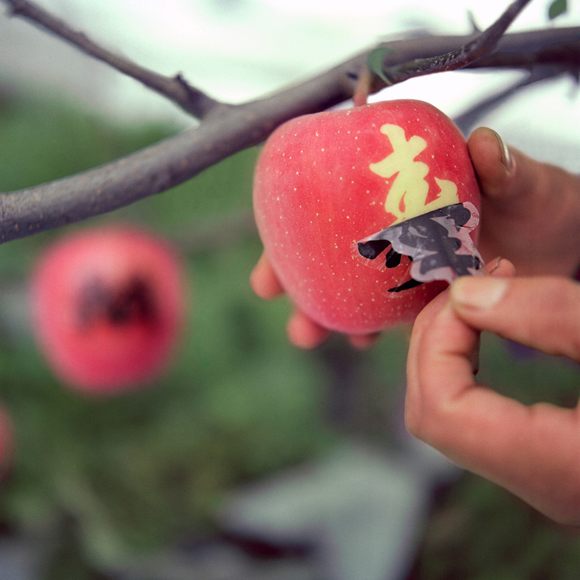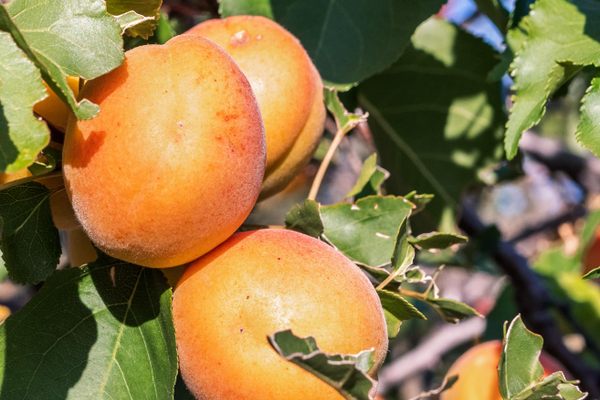While strolling through an apple orchard in Aomori prefecture of Japan, you might not see any fruit. They’re there, but hidden, sheathed in small, waxy bags that dangle from the branches. These are mojie apples in the making, and with the help of a lot of light and a sun-blocking stencil, they’ll soon become beautiful pieces of art.
Making a mojie apple requires patience, commitment, and about a year. The process begins in January, when the apple trees are pruned to ensure each blossom receives sufficient sunlight. After the blossoms are culled in the springtime, apple growers use fluffy wands to hand-pollinate each remaining flower. Once the fruits begin to grow, a multilayered bag is placed around the apple to keep it safe from pests and out of the sun, increasing its photosensitivity. When the bags are eventually removed, the pale, creamy fruit will be outfitted with a sticky stencil outlining the desired image, so that only the surrounding skin turns red.
Though the designs themselves run the gamut from a single word to a Japanese pop star’s face, most depict a symbol or message of good fortune and prosperity. Often offered at weddings or other celebratory events, one of these carefully-crafted apples is more of a thoughtful gift or classy decoration than an on-the-go snack.
Sadly, however, the centuries-old tradition of cultivating mojie apples is slowly fading. According to one apple grower, the time-consuming, labor-intensive process appeals to fewer and fewer orchardists these days. But fret not: You can still find these lucky, tattooed apples in a few select orchards in Aomori prefecture, and in shops across Japan.
Written By
 Abbey Perreault
Abbey Perreault















